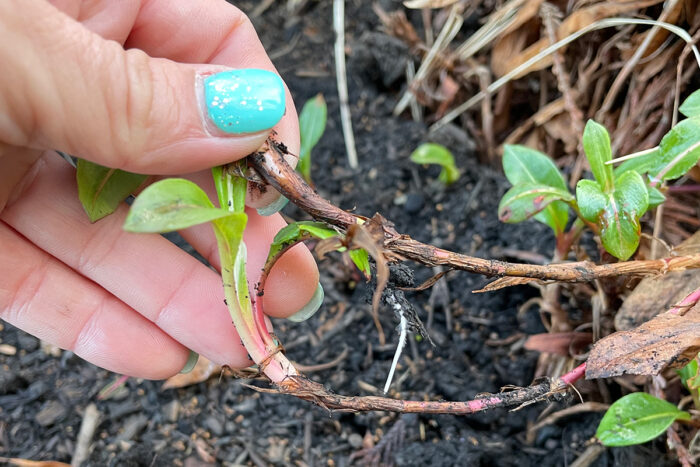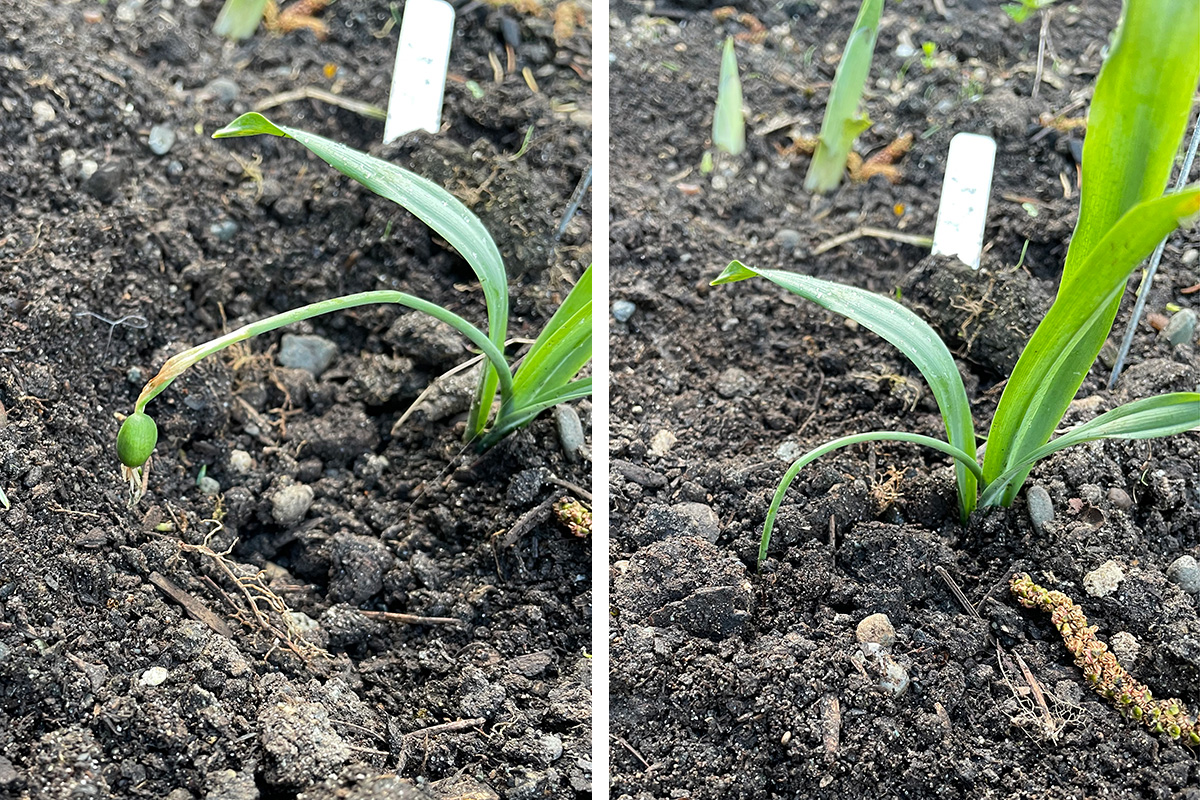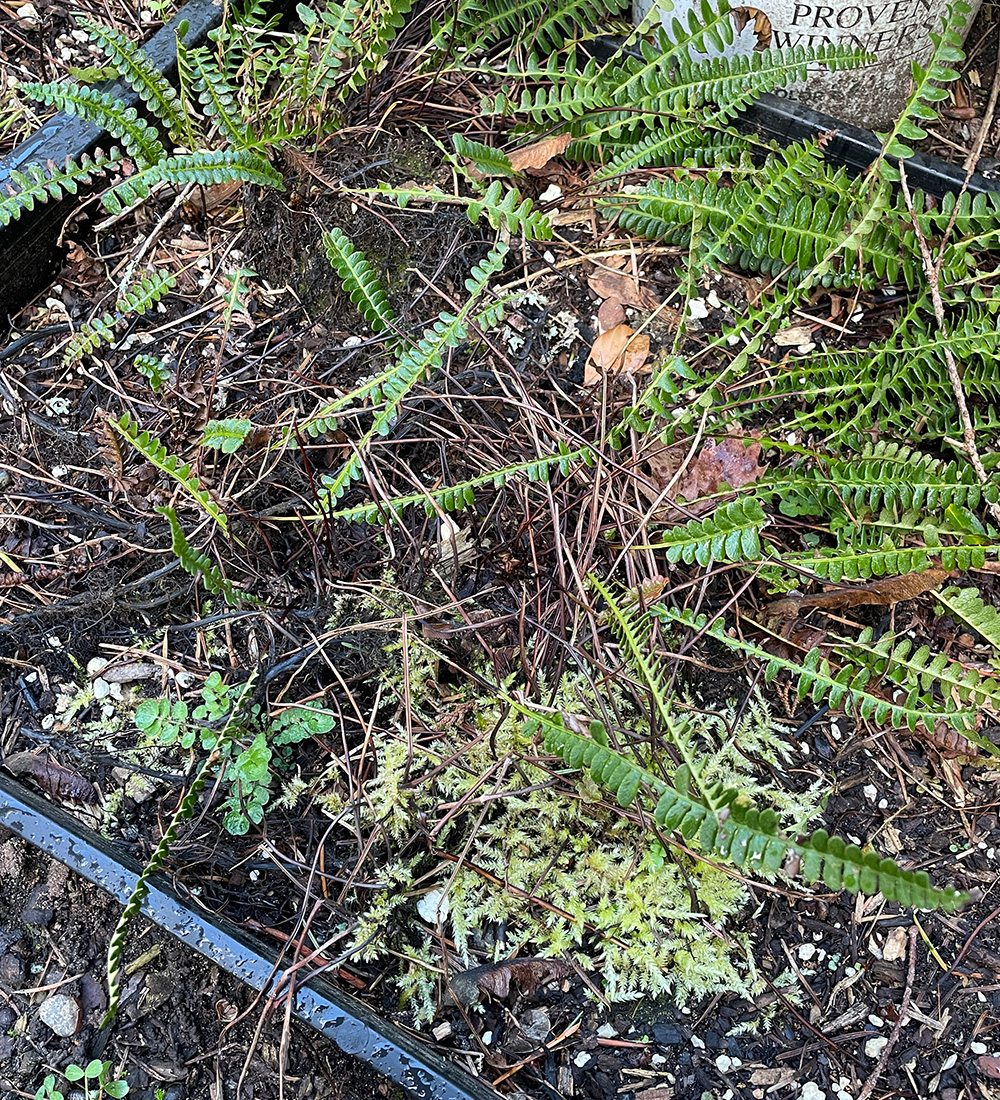
I don’t know about you, but plant propagation has always felt like a mystery to me. There are so many ways to propagate, and each plant has different wants and needs. It could take a lifetime to discover all of the ins and outs of propagating, but over the years nature, accidents, and unitdy mulching have taught me a few things about propagating in my own garden. I’m happy to share some plant propagation shortcuts I’ve discovered.

Get more bulbs by planting their seeds
One way to increase bulbs such as snowdrops (Galanthus spp. and cvs., Zones 3–9) in your garden is to plant the seeds from your existing plants. Yes, they are bulbs, but every year some of the seeds will develop from the blooms. The seeds will get fat if pollinated. If left on the ground, they are usually carried off and eaten by mice or squirrels. My lazy way to propagate them is to dig a small hole with my claw (Korean weeder) and tuck the seed, while still attached to the stem, into the hole. I then push the soil back over it and tamp it down with my hand.
I have two reasons for doing it this way. I’m not really sure if the seed is completely ripe or ready to plant, but by leaving it on the stem I allow it to continue to mature underground and out of the immediate reach of hungry critters. The other reason is because I can see where I did it and won’t rake it up by accident while cleaning around other plants. The stem will eventually drop off, but the seed will stay buried under good moist soil. Next year there will likely be two leaves, and the following year it may flower. This works with other bulbs as well. I’ve done it with fritillary (Fritillaria spp. and cvs., Zones 5–8), trillium (Trillium spp. and cvs., Zones 4–9), and mayapple (Podophyllum spp. and cvs., Zones 3–9).

Increase your ground covers through division
There are many ground covers in my garden that are also easy to propagate by division. Anything that spreads with runners (sometimes too aggressively) can be separated and replanted. You can replant the divisions in a pot for growing on or into another spot in the garden. Spring is the best time to divide this way because the plant is starting to grow actively, there is plenty of moisture (rain), and it is not too hot.
Simply dig a little bit on the edge of the plant. You will see a couple of stems with little roots clinging to the bottom. These are the roots you need for a new plant. I usually shorten the stem a bit and make sure it has two nodules or joints with at least two or three fine root hairs. These can be placed immediately into a pot with moist soil. Sprinkle a little bit more soil on the stem so it is covered lightly, but don’t cover any leaves. You can add a couple of garden staples if you need to hold it down. Water it well and keep it watered until the plant is well rooted. Then you can give it away, sell it, or replant it.
If you have a prepared bed or location for new plants, you can place divisions directly into the prepared soil. To prepare the soil, dig it up a bit so it is loose, place a larger division (clump) there, and sift some soil over the stems. Water well and be generous with water until it roots in. Creeping water fern (Austroblechnum penna-marina, Zones 7–9, lamium (Lamium spp. and cvs., Zones 4–8), persicaria (Persicaria spp. and cvs., Zones 3–11), and pachysandra (Pachysandra spp. and cvs., Zones 4–9) are some of the easiest.

Grow additional shrubs by layering
The benefit of being in a hurry or not cleaning up the garden beds in fall is the self-layering plants. Many times I have found extra plants when doing spring cleanup; one of the most common is hydrangea (Hydrangea spp. and cvs., Zones 4–10). Often the large flowers weigh down the branch until it is touching the ground. Sometimes it gets stepped on or is covered with mulch or fall leaves. This results in roots growing along the stem that is under cover and in contact with the soil. When done intentionally to produce more plants, this propagation method is called layering.
No matter if it occurs accidentally or intentionally, rooted stems can be removed from the mother plant by cutting where the branch or stem enters the ground. The new plant can be eased out of the ground by digging around the base where it touches the ground. Now you can move it to a new location or put it into a pot if it is small.
For greater success when layering intentionally, find a node or growth point on a stem that will bend to reach the ground, scrape off a little of the bark around the node, and bury it in the ground just a few inches deep. Use a garden staple to hold it down in two places, and leave the end of the branch sticking out of the ground. It will only take a few months to have a new plant that can be moved as described above. I have propagated hydrangeas, rhododendrons and azaleas (Rhododendron spp. and cvs., Zones 3–11), dogwoods (Cornus spp. and cvs., Zones 2–9), weigelas (Weigela spp. and cvs., Zones 3–9), and many others this way. One note of caution: If you purchased a plant that is patented, it is illegal to propagate it, even for your own use.
—Susan Calhoun is the owner of Plantswoman Design in Bainbridge Island, Washington.
Photos: Susan Calhoun
Fine Gardening Recommended Products

Berry & Bird Rabbiting Spade, Trenching Shovel
Fine Gardening receives a commission for items purchased through links on this site, including Amazon Associates and other affiliate advertising programs.

Pruning Simplified: A Step-by-Step Guide to 50 Popular Trees and Shrubs
Fine Gardening receives a commission for items purchased through links on this site, including Amazon Associates and other affiliate advertising programs.

ARS Telescoping Long Reach Pruner
Fine Gardening receives a commission for items purchased through links on this site, including Amazon Associates and other affiliate advertising programs.



















Comments
Log in or create an account to post a comment.
Sign up Log in